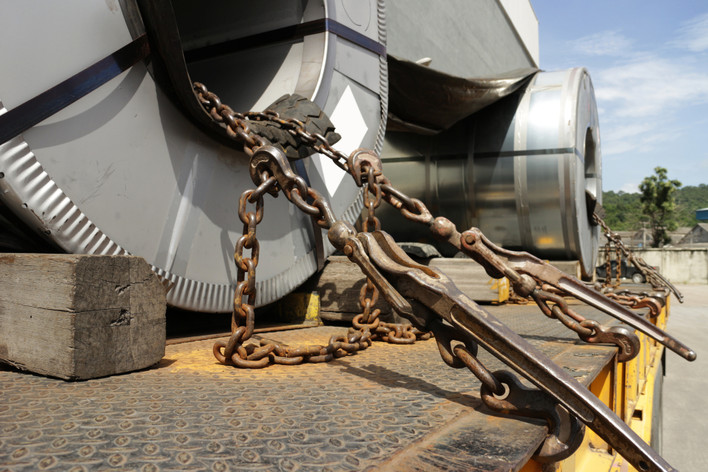
Chain Binders, also known as load binders, are a newer tool in the trucking industry that’s proving to be a very valuable and important one! Simply, these devices tighten chains for securing your cargo before transport, but there’s still a lot of information regarding chain binder types, uses, and safety. Chain Binders are perfect for situations where strength and stability are required, and can help solve all your binding needs!
Table of Contents
How to Use Chain Binders

How does one use chain binders? satta matka While it’s important to check that you are not exceeding the working load limit of either your chain or binder, these are some basic steps that can be applied to all of our chain binders:
- The first step is to attach the chain to the proper tie-down points on your truck, flatbed, or cargo. Position the chain to secure your load properly, whether that is attaching the chain to the trailer and to or over your load with its hooks.
- Once your chain is properly secured, fully extend the binder and hook chain links to both ends as tight as possible.
- Pull the handle to begin tightening the chain, and adjust as needed.
- If the chain is still loose after levering the binder, reposition the chain to make it tighter and try again. But, if the binder is so tight you are unable to pull the lever all the way, loosen the attachments to avoid recoil or damaging of the chain/binder.
Types of Chain Binders
There are two typical types of binders: Lever and Ratchet. However, there are multiple sub-categories of both binder types, with their own benefits and specifications:

1. Lever Chain Binders
- Standard Lever – also called “snap,” lever binders are easy to use and have less maintenance compared to ratchet binders. If you’re a general purpose flatbedder or tend to carry a variety of different cargo, we recommend our standard lever binders! Perfect for their price and useful for multiple load types, leverage is used to tighten the chain, and these binders lock after the lever rotates 180-degrees. The lever stores energy, so operators need to be careful not to let the handle recoil.

- Recoilless/Safety Release – Recoilless, or safety release, binders are a type of lever binder designed so the user can release tension without any kickbacks! The binder’s body independently rotates, free of the handle to release tension smoothly and easily. This eliminates the chance of injuries from the handle swinging when released! If you’re a new/inexperienced flatbedder or hauler, we recommend using the recoilless binders as they are easy to use and can avoid or lessen risk of damaging your cargo and keeping yourself safe from recoil!

In comparison, Ratchet binders have a slower and steadier loading and unloading process.
2. Ratchet Chain Binders
- Standard Ratchet – If you’re a general purpose flatbedder or tend to carry a variety of different cargo, we recommend our standard ratchet binders! Perfect for their price and useful for multiple load types, ratchet binders are often viewed as a safer binder option because they do not store as much energy and tension in the handle, reducing the risk of recoil. Ratchet binders have the lever and screw working together, which takes less pulling on the handle to apply tension to the binder.

- Folding Handle
For the flatbed trucker who rarely uses but wants the easy storage and flexibility of straps, our foldable handle ratchets are perfect for you! Very easy to use and store, the binder’s handle can be folded down and hidden away once your load is secure. These binders offer a higher working load limit than standard ratchet binders, and are recommended to be used with G70 OR G80 chains for your heavier loads. It’s quick to install with three positions: ratchet extension, ratchet take-up, and a free spin setting for quick adjusting in either direction! These binders have a vinyl coated barrel for a strong and comfortable grip and are proof-tested to satisfy FMCSA and DOT requirements.

- Open Body Design
Do you tend to travel through a variety of weather conditions like snow, mud, sand, or rain/water? If so, then you understand the stress and headaches that come with cleaning your trucking tools, and we highly recommend our Open Body Ratchet Binders for you! Our Open Body Ratchet Binders are uniquely designed for easy access and cleaning, for a longer-lasting binder! The end-fitting hooks are coated with gold chromate for rust resistance. This binder has a heavy duty working load limit of 7100 lbs – 12,000 lbs. The Open Body design allows easy removal of unwanted debris such as mud, snow or ice. Like all our binders, the Open Body Ratchet binders meet FMCSA and DOT specifications!

- Swaged Handle Binders
Built for high working load limits to accommodate G80 and G100 chains, our Swaged Handle Binders are our strongest binders on the market! If you’re a heavy hauler or tend to carry heavy cargo, our swaged handle binders were built for you! The swaged barrel is cold-drawn tubing rather than the welded pipe used in other ratchet binders, for increased strength! With a working load limit of 12,000 lbs, our swaged handle binders are built for the most demanding jobs!

What are the Benefits of Using Any or All of These Chain Binders?
The advantage that all truckers should consider when looking for a chain binder is how durable, long-lasting, and safe they are in comparison to nylon straps. Since straps are more susceptible to cuts and tears, chains are best for tying down sharp, large, and heavy loads.
Properly Storing Your Binders
The key to ensuring your binders will last long is how you store them! When storing your binders and chains, it’s best to keep them in a dry area and away from chemical or environmental/weather damage, like in chain carriers or toolboxes. Additionally, regularly check your binders for any signs of wear such as bending, nicks, or cracks.
In the event you find any damage to your binders, it’s best to replace them as soon as possible. As for the chains and hooks you use with them, check individual links for bending, stretching, or twists to ensure you don’t have any weak links. Spending the extra money for replacement chains and hooks is a better option than continuing to use weak chains and risking an accident on the road.
DOT/NACM Securement Regulations
The National Association of Chain Manufacturers provides helpful information and limits for all types of chains and trucking tools!
The minimum working load limit when securing your cargo is listed as at least “one-half the weight” of your load. The limit is the sum of one-half of the working load limit from each tie-down point from anchor to the vehicle, and around, over, or through the cargo.

Cargo securement systems must meet a minimum number of tie-down points, too! The number of tie-downs needed to meet requirements depends on the length and weight of your cargo.
- There must be one tie-down for 5 ft or less in length and 1,100 lbs or less in weight
- Two tie-downs if your cargo is 5ft or less and more than 1,100 lbs, or bigger than 5ft but less than 10ft regardless of its weight.
- For any cargo longer than 10ft, you must secure it with two tie-downs for the first 10ft and then one additional tie-down for every 10 ft after.

Finally, you must check that your chains are following regulations depending on their grade and length.
- Grade 70 Chains have different maximum working load limits depending on the chain’s size. A ⅜ chain has a WLL of 6,600 lbs, whereas a ½ chain has a WLL of 11,300 lbs.
- Grade 80 Chains with a ⅜ size has a load limit max of 7,100 lbs, and a ½ chain has a limit of 12,000 lbs.
- Grade 100 Chains, one of the strongest chains on the market, has working load limits of 5,700 lbs for 5/16 chains, 8,800 lbs for ⅜ chains, and 15,000 lbs for ½ chains.

Additionally, make sure the working load limits of your chains match or nearly match the limits of your binders! While you may have a Standard Ratchet Chain Binder, if you try to use it with a G100 chain for a heavy-duty job you may render the binder useless, and you risk damaging your binder, chain, OR cargo because the binder and chain’s working load limits are not equal.
When you’re looking for tools and chains for securing your cargo, you must determine which binders meet you or your company’s safety requirements!
Where to Buy High-Quality Chain Binders
If it sounds like you could greatly benefit from the chains and binders mentioned above, your next step is finding the best place to purchase high-quality chains and binders; and there’s no better place than Mytee Products!
We offer all of the chains and binders mentioned in the article above, as well as binder accessories like Lever Binder Clips! With three different settings, you can easily thread these clips through a chain’s link and secure it to the handle on lever load binders to prevent accidental handle and tension release, or recoil!

At Mytee Products, choose from an array of chain binders, chain grades, and end-fitting hooks to find the solution you need to safely secure your heavy cargo!
Rachael is a content writer at sendkoala.com, who has written on a Ultimate Resume Guide, from colored diamonds to SEO software. In her spare time, she enjoys singing, sketching, cooking, and video games.





